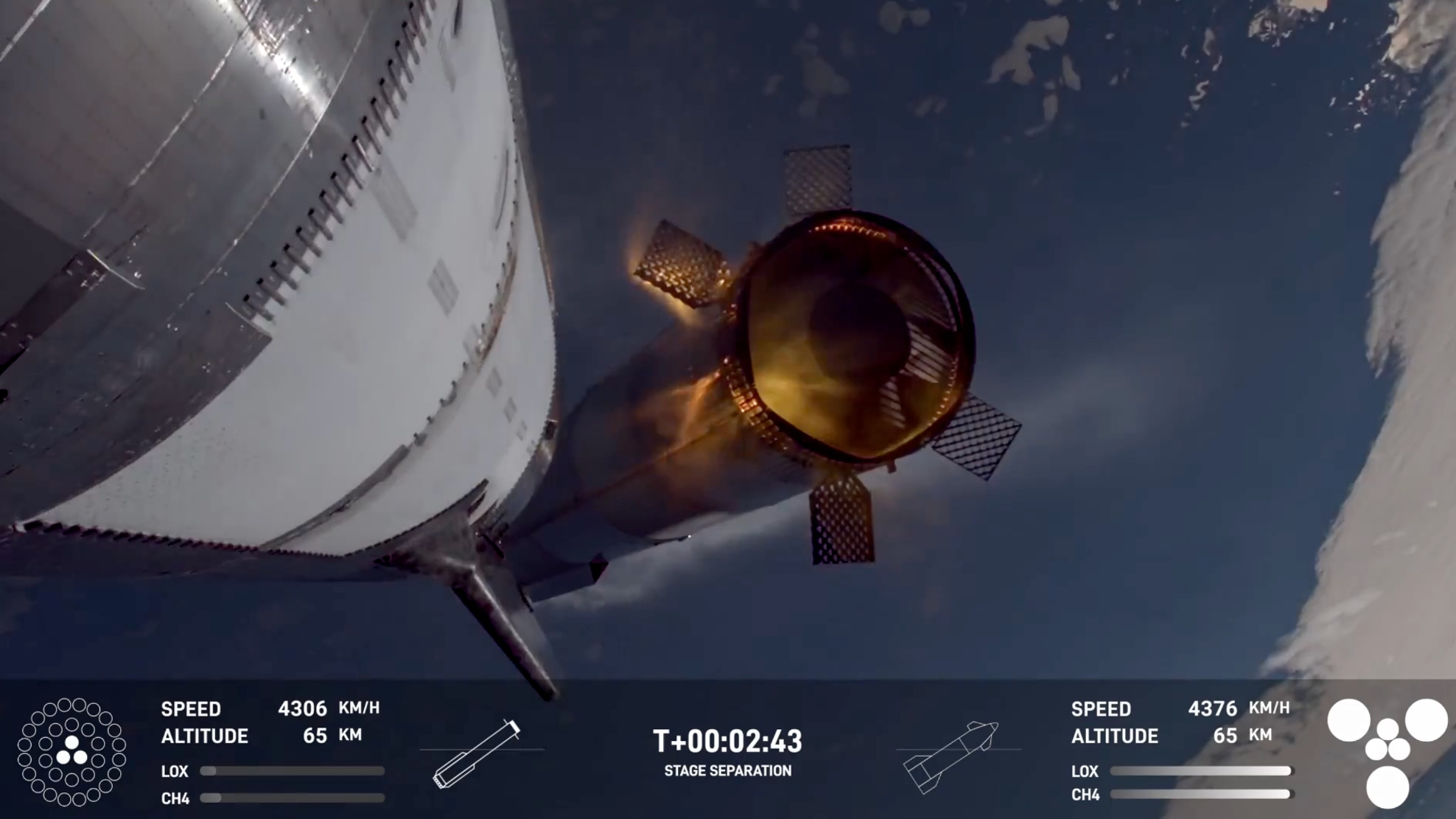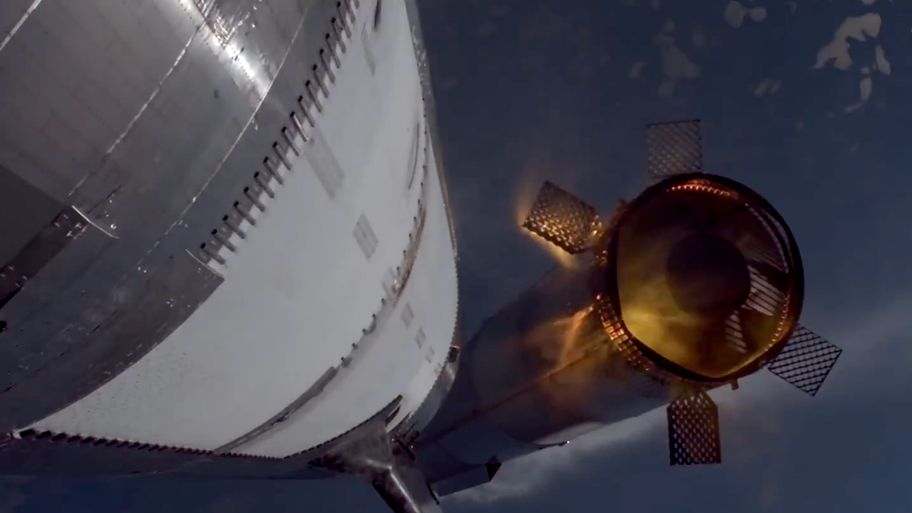
The two stages of SpaceX’s Starship megarocket separate during the vehicle’s seventh test flight on Jan. 16, 2025. The upper stage was lost about six minutes later. (Image credit: SpaceX)
The explosion that destroyed the upper stage of SpaceX’s Starship vehicle yesterday (Jan. 16) was likely caused by a leak, Elon Musk said.
Starship launched yesterday afternoon from SpaceX‘s Starbase site in South Texas, kicking of the seventh flight test of the 403-foot-tall (123 meters) megarocket.
Things went well initially. The vehicle’s two stages — the Super Heavy booster and Ship upper-stage spacecraft — separated on time, and Super Heavy returned to Starbase as planned, where it was caught by the launch tower’s “chopstick” arms.
Ship ran into problems shortly after its partner’s big moment, however. The 171-foot-tall (52 m) spacecraft broke apart over the Atlantic Ocean roughly 8.5 minutes after liftoff, creating a sky show seen by observers in the Turks and Caicos islands and other nearby locales.
You may like
Though it’s still early in the anomaly investigation, SpaceX has already identified a likely cause, according to Musk, the company’s founder and CEO.
“Preliminary indication is that we had an oxygen/fuel leak in the cavity above the ship engine firewall that was large enough to build pressure in excess of the vent capacity. Apart from obviously double-checking for leaks, we will add fire suppression to that volume and probably increase vent area. Nothing so far suggests pushing next launch past next month,” Musk said via X, the social media platform he owns, about 2.5 hours after Flight 7 launched. (Starship’s Raptor engines are powered by liquid oxygen and liquid methane.)
As the latter part of that post indicates, SpaceX plans to fly Starship often in 2025; the company has applied for permission to launch the megarocket from Starbase up to 25 times this year.
Breaking space news, the latest updates on rocket launches, skywatching events and more!
Related: SpaceX catches Super Heavy booster on Starship Flight 7 test but loses upper stage (video, photos)
Starship Flight 7 breaking up and re-entering over Turks and Caicos pic.twitter.com/iuQ0YAy17OJanuary 16, 2025
That pressure overload apparently led to a fire “in the aft section of the ship, leading to a rapid unscheduled disassembly,” SpaceX wrote in a blog post about Flight 7 yesterday evening, stressing that this interpretation is based on initial data analyses. (“Rapid unscheduled disassembly” is a term of art for a spacecraft explosion.)
“We will conduct a thorough investigation, in coordination with the FAA, and implement corrective actions to make improvements on future Starship flight tests,” the company added, referring to the U.S. Federal Aviation Administration.
“Starship flew within its designated launch corridor — as all U.S. launches do to safeguard the public both on the ground, on water and in the air,” SpaceX continued in the blog post. “Any surviving pieces of debris would have fallen into the designated hazard area.”
Still, the anomaly did have some effects beyond the SpaceX sphere. “The FAA briefly slowed and diverted aircraft around the area where space vehicle debris was falling,” agency officials told Space.com via email yesterday afternoon, noting that normal aircraft operations resumed shortly thereafter.





